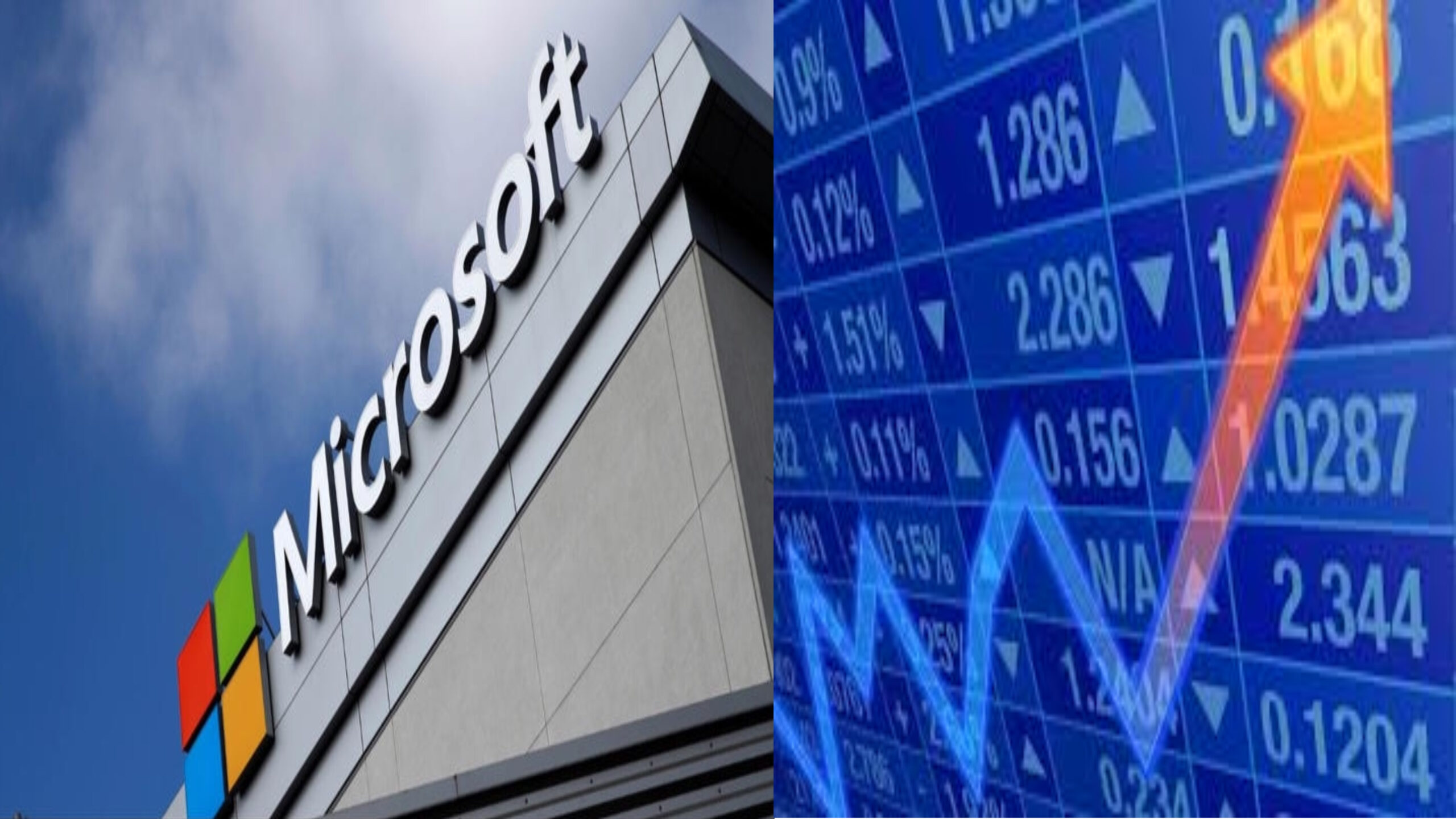Microsoft has recently attained a remarkable milestone, entering the prestigious $3 trillion market value club. This achievement places Microsoft as the second most valuable company globally, following closely behind Apple, in a captivating battle for market capitalization supremacy that has been unfolding since the beginning of the year. Microsoft briefly claimed the lead earlier in January, showcasing the dynamic nature of these tech giants.
The ascent to this historic market value was propelled by a surge in Microsoft’s stock, reaching a record high of $405.63—a substantial 1.7 per cent increase. This propelled the company’s market capitalization beyond the $3 trillion mark. However, the closing price settled slightly below this milestone at $402.56. Meanwhile, Apple, with a share price dip of 0.35 per cent, closed at $194.50 but maintained its own impressive $3 trillion market value, as reported by data from the London Stock Exchange Group (LSEG).
Microsoft’s strategic investment in OpenAI has played a pivotal role in its recent triumph, positioning the company as a frontrunner in the fiercely competitive landscape of generative artificial intelligence (AI). Industry analysts highlight Microsoft’s prowess in AI, driven by OpenAI’s cutting-edge technology, as a clear advantage over its counterparts, including tech giants like Google’s Alphabet, Amazon, Oracle, and Meta Platforms.
Stifel analyst Brad Reback emphasized the significance of AI optimism for Microsoft, citing it as a driving force behind the company’s success. He noted that Apple, in contrast, lacks a “clear AI story,” and concerns about iPhone sales growth rates and market penetration persist. Microsoft’s strategic focus on AI, amplified by its collaboration with OpenAI, appears to be a key differentiator in the evolving tech landscape.
While Microsoft celebrates its achievement, challenges loom for Apple, particularly concerning slowing iPhone demand, notably in the vital Chinese market. To counter this trend, Apple has resorted to rare discounts to stimulate sales, facing intense competition from local rivals such as Huawei. These challenges underscore the complexities of maintaining leadership in the highly competitive tech industry, where market dynamics and consumer preferences are ever-changing.
Looking ahead, Microsoft’s stock has exhibited robust performance, showcasing a substantial gain of nearly 57 per cent in 2023. The upward trajectory continues in the current year, with a notable 7 per cent increase. This consistent growth reflects the market’s confidence in Microsoft’s strategic direction and its ability to navigate the evolving technological landscape.
In contrast, Apple experienced a 48 per cent rise in its stock value last year, coupled with a more modest 1 per cent uptick in the current year. The juxtaposition of these figures highlights the differing trajectories of these tech giants, influenced by factors ranging from product demand to strategic investments and technological innovation.
The broader implications of Microsoft’s achievement extend beyond the financial realm. As technology continues to play a central role in shaping the global economy, companies with a strong foothold in AI and other emerging technologies are well-positioned for sustained success. Microsoft’s investment in OpenAI exemplifies a forward-looking approach, aligning its business strategy with the transformative potential of AI.
In conclusion, Microsoft’s entry into the $3 trillion market value club signifies a significant milestone in the ever-evolving landscape of technology and finance. Fueled by its strategic investments in AI, particularly through OpenAI, Microsoft has solidified its position as a key player in the competitive tech industry. The dynamics between Microsoft and Apple serve as a compelling narrative, reflecting the challenges and opportunities inherent in the pursuit of market leadership. As both companies navigate the complexities of the global market, their strategies, innovations, and responses to evolving trends will continue to shape the future of technology and redefine the benchmarks of success in the digital era.

